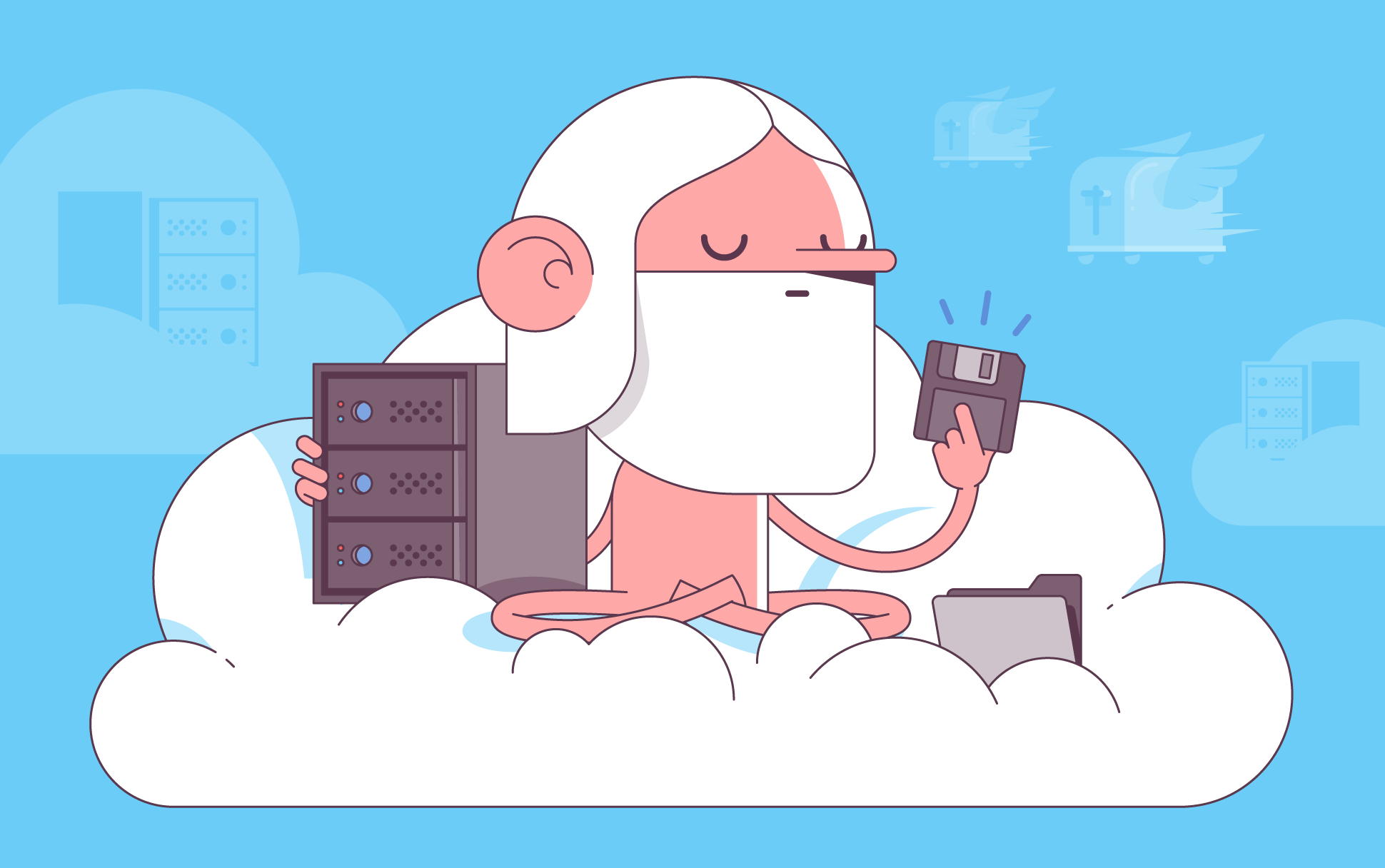
Let’s get back to basics. Today, we want to talk about an Internet term that you may find yourself using in your everyday life without really knowing what it means: The Cloud. The term “the cloud” is thrown about so much that after a while it can seem a bit nebulous. It seems like everyone is using the cloud for everything. Surely it’s not all that all-encompassing, is it? Actually, it really is.
When someone uploads something to “the cloud”, they are not uploading it to one of those masses of water droplets in the sky, but rather a massive network of servers. You, like everyone else with access to the Internet, probably use the cloud on a daily basis. It’s made up of software, applications, databases, and services that are stored on the Internet rather than locally on your computer.
How the cloud works
Cloud computing uses virtualization software to create simulated, digital computers that behave like physical computers. This digital computer is known as a virtual machine. A server can contain a plethora of these virtual machines, separated from one another so that files on one virtual machine can’t be accessed by another virtual machine. Each virtual machine serves its own purpose, with its own files and applications.
Because one physical server can act as multiple digital servers, virtualization is a far more efficient way to use servers, and it’s the reason why cloud computing is so widespread. A single server using cloud computing can potentially serve many customers at a lower cost than traditional servers. Furthermore, there’s less chance of services going down as cloud vendors typically have their services backed up on multiple machines.
There are different ways in which the cloud can be deployed. For example, a private cloud is a server or network dedicated solely to one organization. In contrast, a public cloud may refer to a physical server shared by multiple organizations, divided into multiple virtual machines, kind of like tenants renting individual rooms in a building.
Now, let’s go through some examples of the cloud in action.
Consumer cloud applications
Most likely, every app or digital service you use daily is accessed through the cloud. From Gmail, Google docs, and Google photos to Dropbox, Netflix, online banking, and online shopping apps. As we mentioned earlier, because these applications are located in the cloud and not your local device, you can access these apps and their files from any device you use. That’s how you can back up your photos to Google Photos or Dropbox and know they’re safe, and it’s also how you’re able to collaborate using Google Docs or Microsoft OneDrive.
Business cloud solutions
The cloud has been a real boon for businesses, particularly small businesses trying to get off the ground or move online. The cloud offers an affordable, easy solution to digitization as compared to traditional servers of yesteryear. Apart from that, there is a range of services on the cloud available to businesses that help make life easier. One example is Software as a Service (SaaS) applications, which are apps hosted on cloud servers that users can access on the Internet. There are myriad tools available to help with business dealings, from marketing and project management tools to human resource and accounting software. Using SaaS tools can cut down costs significantly.
Wrap up
The cloud has become an integral part of our everyday lives, and it looks like it’s here to stay. For consumers, employees, and business owners alike, the cloud has a range of benefits, making our everyday lives, work environments, and generally staying connected far more convenient.

Cora is a digital copywriter for SSLs.com. Having eight years of experience in online content creation, she is a versatile writer with an interest in a wide variety of topics, ranging from technology to marketing.